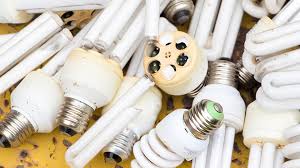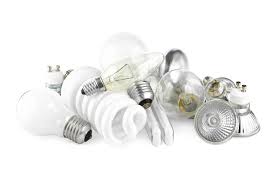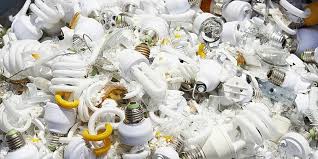Lightbulb waste refers to the disposal or discarding of used or broken lightbulbs, such as incandescent, fluorescent, or LED bulbs, which contain materials that may be harmful to the environment if not handled properly.
This waste can include bulbs that are burned out, damaged, or simply no longer needed, and it should be managed in accordance with local regulations to minimize environmental impact. Recycling programs and safe disposal methods are often encouraged to prevent the release of hazardous substances like mercury from certain types of bulbs.
Lightbulbs play an essential role in brightening our homes, offices, and streets. While they illuminate our lives, they also create a shadow of waste that needs our attention. Properly disposing of lightbulbs, whether they are incandescent, fluorescent, or LED, is crucial for safeguarding the environment. Lets explore what lightbulb waste is, why it matters, and how you can responsibly manage it.
Understanding Lightbulb Waste
Lightbulb waste refers to the disposal of used or damaged lightbulbs. These bulbs contain various materials that can be harmful to the environment if not handled correctly. The primary concerns with lightbulb waste are;
1. Mercury Hazard: Many fluorescent bulbs contain small amounts of mercury, which is toxic to humans and wildlife. When these bulbs break or end up in landfills, mercury can escape into the environment, posing health risks.
2. Landfill Impact: Lightbulbs, especially older incandescent ones, end up in landfills, taking up space and contributing to environmental problems like soil and water contamination.
3. Missed Recycling Opportunities: Lightbulbs, especially LEDs, contain recyclable materials like glass, metal, and plastic. Failing to recycle them means missing out on valuable resources.
Why Lightbulb Waste Matters
Properly managing lightbulb waste is essential for several reasons:
1. Protecting Health: Mercury exposure from broken fluorescent bulbs can lead to serious health issues. Responsible disposal reduces this risk.
2. Conserving Resources: Recycling lightbulbs conserves raw materials, reduces energy consumption, and lowers greenhouse gas emissions associated with manufacturing new bulbs.
3. Minimizing Pollution: By disposing of lightbulbs responsibly, we prevent hazardous materials from seeping into soil and water, reducing environmental pollution.
How to Responsibly Manage Lightbulb Waste
1. LED Bulbs: LED bulbs are the most environmentally friendly option. They last longer, contain no mercury, and are highly recyclable. When they finally burn out, check for local recycling programs or electronic waste collection events.
2. Fluorescent Bulbs: Compact fluorescent lamps (CFLs) contain small amounts of mercury. If a CFL breaks, follow proper cleanup procedures. Take used CFLs to designated recycling locations or household hazardous waste facilities.
3. Incandescent Bulbs: Incandescent bulbs are less eco-friendly due to their shorter lifespan and energy inefficiency. However, recycle the glass components when possible. Some local recycling programs accept them.
4. Specialty Bulbs: Some bulbs, like halogen or high-intensity discharge lamps, require specific disposal methods. Check with local authorities or retailers for guidance.
5. Safety First: When handling broken bulbs, wear gloves, use a damp cloth for cleanup, and ventilate the area. Avoid vacuuming, as it can spread mercury vapor.
While lightbulbs brighten our lives, they also cast a shadow of waste that we must address responsibly. Understanding the importance of managing lightbulb waste and knowing how to do it safely can help us protect our health, conserve resources, and minimize pollution. By making informed choices and recycling whenever possible, we can illuminate a path towards a cleaner, greener future.
Read Also: Battery Waste: Environmental Impact and Responsible Disposal
The Importance of Managing Lightbulb Waste

Lightbulbs are an integral part of our daily lives, bringing illumination to our homes, workplaces, and streets. However, what often goes unnoticed is the significance of managing lightbulb waste. Let now delve into why properly handling used and discarded lightbulbs matters, and how it can make a positive impact on our environment.
1. Resource Conservation: Lightbulbs, particularly older incandescent ones, consume a significant amount of energy to produce light. By managing lightbulb waste responsibly, we reduce the need for manufacturing new bulbs, saving valuable resources and reducing energy consumption.
2. Reducing Greenhouse Gas Emissions: The production of lightbulbs and their disposal in landfills contribute to greenhouse gas emissions. Recycling lightbulbs helps lower these emissions by reducing the demand for new bulb production, which typically involves energy-intensive processes.
3. Preventing Mercury Pollution: Some types of lightbulbs, like fluorescent and CFL bulbs, contain small amounts of mercury. When these bulbs break or are improperly disposed of, mercury can escape, posing health risks to humans and harm to the environment. Responsible disposal prevents mercury pollution.
4. Space in Landfills: Lightbulbs, though relatively small, can add up in landfills. By diverting them from landfills through recycling programs, we free up valuable space for other waste and reduce the environmental impact associated with landfill use.
5. Promoting Recycling: Managing lightbulb waste encourages recycling practices. Many components of lightbulbs, such as glass, metal, and plastic, are recyclable. By participating in recycling programs for lightbulbs, individuals and communities contribute to a more sustainable future.
6. Health and Safety: Broken fluorescent bulbs release mercury vapor, which is harmful when inhaled. Proper disposal and cleanup procedures are essential to protect human health and safety. Raising awareness about these risks is part of the importance of managing lightbulb waste.
In the glow of our well-lit lives, it’s easy to overlook the importance of managing lightbulb waste. However, doing so has far-reaching benefits, from conserving resources and reducing greenhouse gas emissions to safeguarding our health and environment from mercury pollution.
By embracing responsible disposal methods and supporting recycling initiatives, we can shine a light on a more sustainable future for generations to come.
Read Also: Understanding the Basics of Environmental Law
The Pros and Cons of Lightbulb Waste

Lightbulbs are an essential part of modern life, brightening our homes, workplaces, and streets. However, like most things, they have their advantages and disadvantages, especially when it comes to their waste. In this article, we’ll explore the pros and cons of lightbulb waste in simple terms.
Advantages of Lightbulb Waste
1. Resource Recovery: Many components, like glass, metal, and plastic, can be extracted and reused in the manufacturing of new bulbs, reducing the need for raw materials.
2. Energy Savings: Recycling lightbulbs conserves energy compared to producing new ones. It takes less energy to recycle materials than to create them from scratch.
3. Reduced Greenhouse Gas Emissions: Recycling lightbulbs reduces the greenhouse gas emissions associated with manufacturing new bulbs. This is a positive step toward combating climate change.
Disadvantages of Lightbulb Waste
1. Mercury Hazard: Some lightbulbs, especially fluorescent and CFL bulbs, contain small amounts of mercury. When these bulbs break or end up in landfills, mercury can be released, posing health risks to humans and the environment.
2. Proper Disposal Challenges: Not all areas have convenient recycling programs for lightbulbs, making it challenging for people to dispose of them properly. This can lead to more bulbs ending up in landfills.
3. Health and Safety Risks: Broken fluorescent bulbs can release mercury vapor, which is harmful when inhaled. Handling and disposing of these bulbs require care and awareness of potential health and safety risks.
4. Limited Recycling of Incandescent Bulbs: Older incandescent bulbs are less recyclable compared to newer LED bulbs. This limits the resource recovery potential and environmental benefits associated with their disposal.
Lightbulb waste, like any waste, has its advantages and disadvantages. Responsible management, such as recycling when possible and following safety guidelines for disposal, can maximize the benefits while minimizing the drawbacks. As we continue to rely on lightbulbs for illumination, finding ways to mitigate the negative impacts of their waste is essential for a brighter and more sustainable future.
Read Also: 19 Medicinal Health Benefits Of Cnestis ferruginea (African Ironwood)

